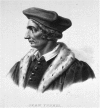Homeostasis: The Underappreciated and Far Too Often Ignored Central Organizing Principle of Physiology
- PMID: 32210840
- PMCID: PMC7076167
- DOI: 10.3389/fphys.2020.00200
Homeostasis: The Underappreciated and Far Too Often Ignored Central Organizing Principle of Physiology
Abstract
The grand challenge to physiology, as was first described in an essay published in the inaugural issue of Frontiers in Physiology in 2010, remains to integrate function from molecules to intact organisms. In order to make sense of the vast volume of information derived from, and increasingly dependent upon, reductionist approaches, a greater emphasis must be placed on the traditional integrated and more holistic approaches developed by the scientists who gave birth to physiology as an intellectual discipline. Our understanding of physiological regulation has evolved over time from the Greek idea of body humors, through Claude Bernard's "milieu intérieur," to Walter Cannon's formulation of the concept of "homeostasis" and the application of control theory (feedback and feedforward regulation) to explain how a constant internal environment is achieved. Homeostasis has become the central unifying concept of physiology and is defined as a self-regulating process by which an organism can maintain internal stability while adjusting to changing external conditions. Homeostasis is not static and unvarying; it is a dynamic process that can change internal conditions as required to survive external challenges. It is also important to note that homeostatic regulation is not merely the product of a single negative feedback cycle but reflects the complex interaction of multiple feedback systems that can be modified by higher control centers. This hierarchical control and feedback redundancy results in a finer level of control and a greater flexibility that enables the organism to adapt to changing environmental conditions. The health and vitality of the organism can be said to be the end result of homeostatic regulation. An understanding of normal physiology is not possible without an appreciation of this concept. Conversely, it follows that disruption of homeostatic mechanisms is what leads to disease, and effective therapy must be directed toward re-establishing these homeostatic conditions. Therefore, it is the purpose of this essay to describe the evolution of our understanding of homeostasis and the role of physiological regulation and dysregulation in health and disease.
Keywords: Claude Bernard; Walter Cannon; control theory; cybernetics; feedback regulation—negative and positive; homeostasis; internal milieu; physiology.
Copyright © 2020 Billman.
Figures









References
-
- Bacon F. (1620). The New Organon. eds Jardine L., Silverstone M. (New York, NY: Cambridge University Press; ), 2000.
-
- Bernard C. (1865). Introduction à l’étude de la Médecine Expérimentale.. J. B. Baillière et Fils, Paris, English Translation by H. C. Greene, New York, NY: Dover Publications, Inc; 88–89.
-
- Billman G. E. (2013). “Homeostasis: the dynamic self- regulating that maintains health and buffers against disease,” in Handbook of Systems and Complexity in Health, eds Strumberg J. P., Martin C. M. (New York, NY: Springer; ), 159–170. 10.1007/978-1-4614-4998-0_10 - DOI
Publication types
LinkOut - more resources
Full Text Sources

